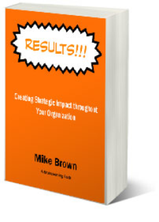The folks at Armada Corporate Intelligence offered an internal branding strategy take on the United Airlines woes, offering strategic thinking questions you can ask and answer to improve your brand's resiliency and avoid brand crises.
3 Ways Your Internal Branding Strategy Can Be Smarter than United Airlines
Via Armada Corporate Intelligence
United Airlines is at the forefront of recent business and general news due to having forcibly removed a passenger from a partner airline flight. Chicago Aviation Department police dragged Dr. David Dao from his seat after United identified him as a low-value flier. That put him next in line to be bumped to make way for several crew members. Dao suffered a broken nose and a concussion, and lost two teeth. This past weekend, United made headlines again with another incident; a couple headed to their wedding were removed after having moved into more expensive seats.
United Airlines seems unable to extricate itself from the intense negative media spotlight right now. These situations underscore a major brand impact of smart technology: nearly every customer is a broadcaster following his or her own personal rules for the ways in which broadcast journalism operates. While the era of personal broadcast journalism is several years old, it’s clear that even major brands have not fully adapted their branding and customer experience strategies to recognize this phenomenon.
3 Internal Branding Strategy Challenges
The concept of internal branding addresses the ways in which an organization prepares its own people to carry out the experience it delivers for its customers. For an airline, determining the correct way for a gate agent to manage boarding, or for a flight attendant to interact with passengers, are both elements of managing an internal brand team.
With current United-related stories focusing on its business practices and crisis communication response, let’s pursue a slightly different path. Here are three internal branding weak spots the United incident highlights. For each, we articulate a challenge and related internal branding questions for your organization to ask and answer.
Anticipating Flexibility in a Rules-Oriented Culture
When making sure an airplane takes off and stays in the air, you don’t want to leave anything to chance. That’s why airlines are sticklers for operations manuals, checklists, and rules. With United, a Wall Street Journal Story reports the company cultivates a “rules-based culture where its 85,000 employees are reluctant to make choices not in the ‘book.’”
The challenge: giving your people the flexibility to handle negative customer situations that may develop or are already happening. United is reviewing its policies after the fact. How can a brand better anticipate these situations? A variation on business war games could be helpful; set up customer interaction situations, having stand-in rogue customers disrupt the system. Alternatively, data analysis of real world customer interactions could signal unusual ones a brand should explore, particularly if a customer introducing more system stress than expected turns it negative very quickly.
Internal Branding Questions:
- How much customer interaction detail is spelled out within your brand policies?
- What do you do on an ongoing basis to monitor when policies aren’t functioning properly?
- Are you actively imagining unusual, hypothetical situations to test how applying the rules might escalate and turn customer interactions negative?
Who Is Your Internal Brand Team?
It is easy to identify your employees as critical members of your internal brand team, particularly those with direct or indirect customer contact. Brands typically focus training attention on employees to ensure they understand and carry out the brand promise as intended.
The challenge: looking beyond your own employees to understand other parties and organizations that are on your internal brand team. While early reports suggested United saw the interaction with Dr. Dao as the purview of the Chicago Aviation police, the officers present on the plane were certainly part of the United internal brand team. One wonders whether United strategized the possibilities with the officers before they boarded the plane to remove the passenger. If that conversation took place, it’s difficult to see how dragging a passenger off the plane was a sanctioned course of action.
Internal Branding Questions:
- Has your brand team consciously explored, from a customer’s perspective, who all the parties are that interact with your customers within your brand experience?
- How many are partners, contractors, agents, or even unrelated or unaffiliated parties you would never include in traditional employee training?
- What steps can you take to make them more formal members of your internal brand team?
Everyone Is a Reporter, Everyone Is on Camera
The first-hand reporting on the United incident came from multiple passengers, complete with different camera angles of the exchange between the Chicago Aviation police and Dr. Dao. The passengers uploaded their videos to social networks directly. That means they were in effect broadcasting the video without any chance for a United response. Sharing the videos may, in fact, have happened even before senior United executives learned of the incident through internal communication channels.
The challenge: brands are controlling less of the message about themselves than ever before. Each customer (or bystander) can cover a brand interaction as it happens. That means there no opportunities for a brand to hide from negative situations or even go through typical internal communication protocols. In a practical sense, this means every member of an organization’s internal brand team needs to be aware that EVERY interaction has the potential to wind up on social networks, and then broadcast channels. Not only do they need to be prepared for this, a brand needs to be listening for customer-created reports. These communication channels move faster than most internal communication processes!
Internal Branding Questions:
- What does delivering media training look like for EVERYONE in your organization – and for your extended brand team?
- What is the bare minimum training required to prepare frontline people interacting with customers to understand the impact of personal reporting?
- What provisions do you have for listening to miscues and problem situations that an external party is reporting even before your internal brand team members can?
Are you prepared?
As you explore these internal branding questions, we do encourage you to consider the worst possible situations you can imagine to more accurately test your internal branding readiness. Don’t shy away from considering: How bad could it get? – via “Inside the Executive Suite”
10 Lessons to Engage Employees and Drive Improved Results
FREE Download: "Results!!! Creating Strategic Impact"
Senior executives are looking for employees who are strong collaborators and communicators while being creative and flexible. In short they need strategic thinkers who can develop strategy and turn it into results.
This new Brainzooming mini-book, "Results - Creating Strategic Impact" unveils ten proven lessons for senior executives to increase strategic collaboration, employee engagement, and grow revenues for their organizations.
Download this free, action-focused mini-book to:
- Learn smart ways to separate strategic opportunities from the daily noise of business
- Increase focus for your team with productive strategy questions everyone can use
- Actively engage more employees in strategy AND implementation success
If you enjoyed this article, subscribe to the free Brainzooming blog email updates.






